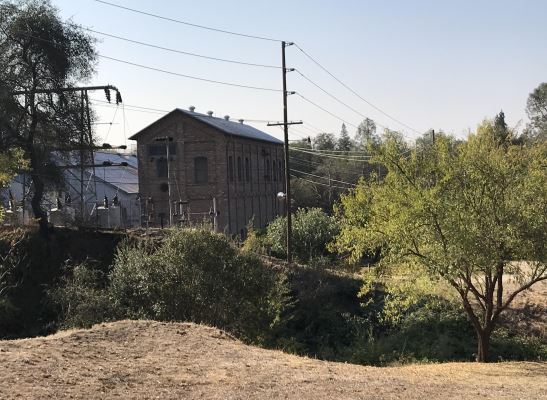Folsom Hydroelectric Power System
Completion Date
1895
Project Type
Power Generation
Location
Folsom, CA
38 40 46.6 N
121 10 37.2 W
38 40 46.6 N
121 10 37.2 W

"The State [of California] agreed to construct the dam using convict labor for which consideration the State received a grant of land for the construction of a prison and water power rights from the impounded water ...; The work progressed slowly during the dry season by disinterested convict labor using hand tools since the use of machinery was forbidden - Historic Landmark Nomination Form, 1974
In 1895, Folsom Powerhouse transmitted 11,000 volts of electricity over a 22-mile stretch to power the streetcars of the Sacramento Electric Gas and Railway Company. Folsom also provided the long-distance, high voltage, three-phase transmission service for municipal and industrial power needs.
The success of this early system proved that low-cost hydroelectric energy could be provided to distant population centers. It served as an early prototype for modern hydraulic power generation and transmission facilities.
Although the lower powerhouse was taken off-line in 1920, the main powerhouse continued in operation until 1952. At that time, the dam was removed to make way for the new Folsom Dam. The original powerhouse is now part of the California State Park System.
Facts
- Water was supplied from a canal leading from a masonry dam, 650-feet long and 87-feet high, on the American River.
- The dam contained 78,500 cubic yards of granite block masonry, united by mortar made from 20,000 barrels of cement.
- At the powerhouse, water passed through four 1,100 horsepower turbines.
- The turbines were connected to four 759-kilowatt generators, reported to be the largest in the world at that time.
- Spent water was discharged into a tailrace for return to the American River. A tailrace is the outflow duct or channel from a water wheel or water turbine.
- A small powerhouse was constructed on the tailrace channel to generate an additional 750 kilowatts. Its 26-strand rope drive transmitted energy from the turbine to the generator, which was located on higher ground.
Resources
- George P. Low, The Folsom-Sacramento Electric Transmission Plant (Sacramento: California State Library, 1959 reprint of 1896 publication).

